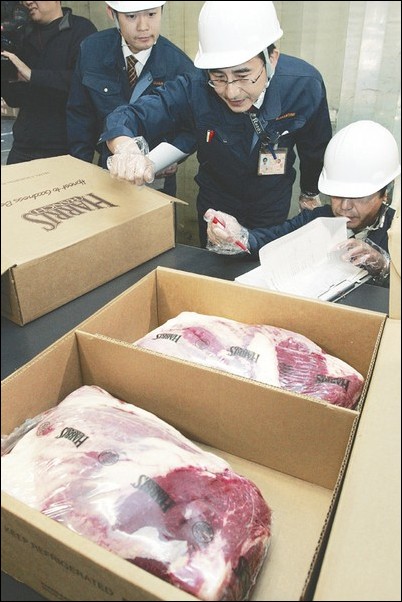Meat consumption to rise
June 25, 2006
(U-WIRE) COLLEGE STATION, Texas – In the next 14 years, the demand for meat is predicted to double, creating a growing concern in the United States and Europe about the health and environmental effects of meat consumption, according to the International Food Policy Research Institute.
Global meat consumption is predicted to increase by 58 percent between 1995 and 2020, according to the 2020 Vision for Food, Agriculture and the Environment Initiative by IFPRI.
Dan Hale, an animal science professor and Texas A&M University extension meat specialist, said meat consumption is increasing because of the increased affluence in developing countries, such as China.
Demand for meat in the United States is steady, he said, increasing only in the intake of poultry.
Hale said there are two main worldviews he encounters in the animal science industry.
“The heart of the issue is: should animals be raised for food?” he said. “In one view, you put the animals’ care before own needs, getting up early to take care of them on Christmas or on a cold morning. In that view, it is ethical to raise animals to eat them.”
Hale said A&M’s Animal Science Department, which used to be called animal husbandry, teaches how care practices of animals help them stay healthy and be more productive.
“Anyone processing livestock had to handle animals humanely,” he said. “People that don’t come from a farm don’t understand that (animals) are more productive if handled in humane ways.”
The other worldview Hale said he encounters is that animals have equal positions to humans, and therefore it is unethical to raise them for food.
Heather Wilkinson, a professor of plant pathology and microbiology, said she does not eat meat for health reasons, but also because of how intense agriculture is on the environment.
Meat seems readily available now, Wilkinson said, but it represents a drain on natural resources such as fresh water and fossil fuels.
“Generally speaking, we don’t look at what we’re doing and how it impacts things,” she said. “From environmental impact, as we face resources becoming limited over time, which we’re all starting to admit, we have to look at things such as meat or highly processed food. Meat is an environmental choice — everything we do, our consumptive lifestyle is an environmental choice.”
Wilkinson said one of the things her lab is working on is disease associated with corn. Almost all corn raised in Texas goes to feed cows, not people, she said.
“Now the state of Texas is pretty big; that’s a lot of corn,” Wilkinson said. “You need about 10 times as much grain (plant protein) to feed a cow, to produce just one percent of beef (animal protein).”
Not all meat is equal, Wilkinson said. Cows that are grain fed and get a low variety diet, as opposed to cows raised on the range, have 500 times more saturated fat.
“The meat we’re eating now is not as good as it used to be,” she said. “If we weren’t so driven to have inexpensive, ready-made food, and we took the time to eat whole foods — things not grown with volume in mind — we’d be better off in diet and health, and better in helping the environment.”
Hale said that, from the United States’ standpoint, meat eating is not a drain on the environment.
“Before settlers came over, there were billions of buffalo and now they’re replaced with billions of cattle,” he said. “(Cattle) meat tasted better and cattle are more docile — easier to work with — otherwise we might still have buffalo.”
Hale said cattle convert un-tillable soil to protein, and that a study in Kansas found proper grazing of prairies keeps prairies in a more natural state.
“About 23 percent of land in the U.S. is un-tillable,” he said. “These cattle ruminate, and can take grass and convert it into protein. That’s another reason we raise cattle — we have all this vast grass … When used correctly, livestock can be a great environmental companion.”
The United States Department of Agriculture says the United States consumes more meat now then ever. In 2000, total meat consumption reached 195 pounds per person, which is 57 pounds above average annual consumption in the 1950s, according to the USDA 2001-2002 Fact Book.
Mickey Bielamowicz, A&M’s extension nutrition specialist and registered dietitian, said meat can be a healthy component of diets.
“You get high-quality protein that helps to build and repair body tissues, helps to build blood antibodies to fight infection,” she said. “Most meat and poultry choices should be lean or low fats, fish, nuts and seeds, along with meat or poultry, and white poultry has less fat than does less red meat.”
Vegetarians can be healthy, she said, they just have to carefully plan their diets.
“If people are vegetarians, they have to be very careful that they balance all nutrients to get all they need,” she said.
Copyright ©2006 The Battalion via CSTV U-Wire






























































































































